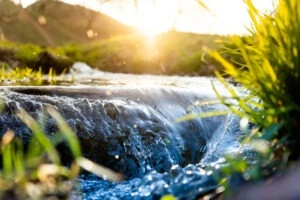
Please note that we are no longer accepting Camp Lejeune cases. We appreciate your interest and understanding. For information on other legal matters, please feel free to contact us.
The water at Camp Lejeune was contaminated by on-base and off-base chemical spills and leaks, largely contributed by improper waste disposal by ABC One-Hour Cleaners, an off-base dry-cleaning firm. Tarawa Terrace and Hadnot Point water treatment plants at Marine Corps Base Camp Lejeune were affected from the 1950s through February 1985.
Contaminates Found in the Water at Camp Lejeune
The Agency for Toxic Substances and Disease Registry (ATSDR) determined the drinking water at Camp Lejeune was contaminated by trichloroethylene (TCE), perchloroethylene (PCE), vinyl chloride, and benzene, which came from leaking underground storage tanks, industrial area spills, and waste disposal sites. These contaminates are unhealthy for human consumption in drinking and bathing water, leading to serious health outcomes due to the high levels of toxic chemicals.
Trichloroethylene and Perchloroethylene
Trichloroethylene (TCE) and perchloroethylene (PCE) are liquids mainly used for metal degreasing and dry cleaning. Industrial processes include the use of trichloroethylene and perchloroethylene (PCE) for a wide range of manufacturing parts and products. Exposure to these solvents can lead to cancer and birth defects.
Vinyl Chloride
Vinyl chloride is a gas produced for commercial uses. The National Cancer Institute (NIH) states if a water supply is contaminated, vinyl chloride can enter household air when the water is used for showering, cooking, or laundry.
Exposure to vinyl chloride can increase the risk of cancers such as liver, brain, and lung cancers. It can also increase the risk of lymphoma and leukemia.
Benzene
Benzene is a chemical that dissolves slightly in water and will float on top of the water and can evaporate into the air quickly. The Centers for Disease and Control Prevention (CDC) states benzene is used to make some types of lubricants, rubbers, dyes, detergents, drugs, and pesticides. Exposure can happen in a variety of ways, including benzene contaminating well water.
Benzene causes cells to not work properly and damage the immune system. The severity of the poisoning is determined by the length of exposure, how you were exposed, and personal factors like age and any underlying medical conditions.
Where Was the Contaminated Water at Camp Lejeune?
The Marine Corps discovered in 1982 that two of the eight water plants were providing contaminated water. The ATSDR determined the contaminates were in the drinking water for 346 months during the years 1957 through 1987. However, contaminated wells ceased operation in February 1985.
Tarawa Terrace and Hadnot Point water plants provided water to enlisted-family housing, barracks for unmarried service personnel, base administrative offices, schools, and recreational areas, and the base hospital.
Tarawa Terrace
The main contaminant in the water from Tarawa Terrace was perchloroethylene (PCE), a chemical used by ABC One-Hour Cleaners. The groundwater was affected because of spills and improper disposal, which affect the water well. This contamination is predicted to have started when the dry-cleaning company began business in 1953.
Hadnot Point
The water contamination at Hadnot Point is more complicated because it involved many sources and several different contaminants. On-base spills at industrial sites and leaks from underground storage tanks contributed to the contaminants found in the well.
Numerous sites on the base, such as the former fire training area, liquid-disposal area, fuel-tank sludge area, and a burn and dump area also aided in the contaminants found in Hadnot Point water well.
Is the Water at Camp Lejeune Drinkable Now?
According to a Camp Lejeune Historic Drinking Water press release in 2007, the water at Camp Lejeune is safe to drink today and has been since at least March 1987. Camp Lejeune is following the comprehensive federal and state laws and regulations established to ensure safe drinking water.
How Did the Contaminated Water Affect People?
Depending on the length of exposure, including how much and when the exposure happened can result in varying symptoms. The water contamination at Camp Lejeune has been connected to serious health outcomes for those who lived and worked there, including their families. Some health conditions include:
- Bladder cancer
- Breast cancer
- Esophageal cancer
- Female infertility
- Hepatic steatosis
- Kidney cancer
- Leukemia
- Lung cancer
- Miscarriage
- Multiple myeloma
- Myelodysplastic syndromes
- Neurobehavioral effects
- Non-Hodgkin’s lymphoma
- Renal toxicity
- Scleroderma
Those affected by water contamination can now recover damages if exposed for at least 30 days from August 1, 1953 to December 31, 1987, according to the Camp Lejeune Justice Act of 2021.
Camp Lejeune Lawsuits
As a result of the contaminated water exposing people to dangerous chemicals while living and working at the base, serious health conditions developed. A lawsuit can be filed for those affected because of their affiliation with Camp Lejeune between the years 1953 and 1987. Your sickness because of exposure may qualify you to receive compensation.
We Will Be
There To Help
You All The Way
Call Now to Discuss Your Case
If you or a loved one is affected because of the contaminated water at Camp Lejeune, contact The Fitch Law Firm LLC today to see how our team’s services can help you.
